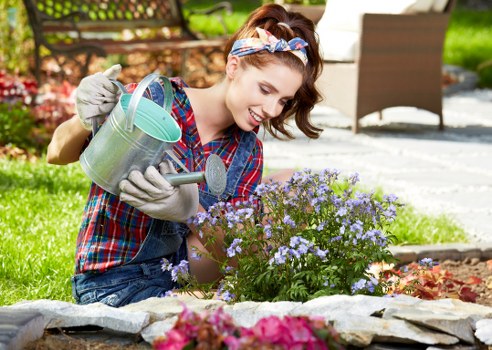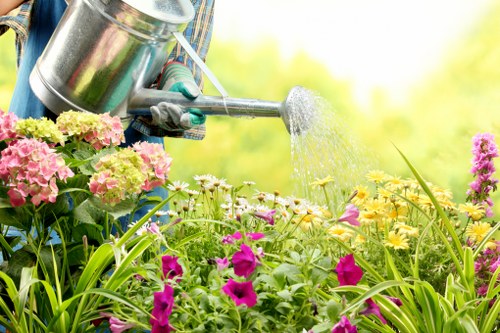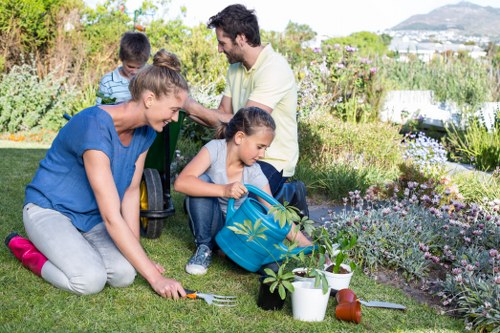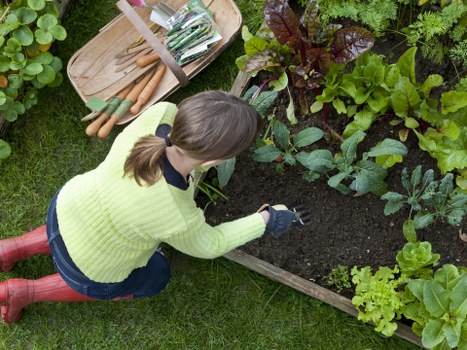Comprehensive Guide to Garden Maintenance in Cricklewood
Introduction to Garden Maintenance

Maintaining a beautiful garden in Cricklewood requires dedication, knowledge, and the right tools. Whether you're a seasoned gardener or a beginner, understanding the basics of garden maintenance can transform your outdoor space into a thriving oasis.
Cricklewood's unique climate and soil conditions present both opportunities and challenges for gardeners. By tailoring your maintenance practices to suit these local factors, you can ensure a lush and vibrant garden year-round.
In this guide, we'll explore essential garden maintenance tips, seasonal tasks, and the best practices to keep your garden in top shape. From planting and pruning to pest control and soil management, we've got you covered.
Essential Tools for Garden Maintenance

Having the right tools is crucial for efficient garden maintenance. Investing in quality equipment not only makes tasks easier but also ensures better results.
Here are some must-have tools for your Cricklewood garden:
- Pruning Shears: Ideal for trimming and shaping plants.
- Garden Fork: Perfect for loosening soil and removing weeds.
- Watering Can: Ensures plants receive adequate moisture.
- Gloves: Protect your hands from thorns and dirt.
- Lawn Mower: Keeps your grass neat and tidy.
Regular maintenance of your tools will extend their lifespan and maintain their effectiveness.
Seasonal Garden Maintenance Tasks

Different seasons bring unique challenges and opportunities for garden maintenance. Adapting your care routine to the changing weather can promote healthy plant growth and prevent common issues.
Spring Tasks
Spring is the perfect time to prepare your garden for the growing season. Focus on:
- Soil Testing: Assess nutrient levels and pH balance.
- Planting: Sow seeds and transplant seedlings.
- Pruning: Trim back overgrown branches.
Summer Tasks
Summer maintenance emphasizes keeping plants healthy under the heat. Key activities include:
- Regular Watering: Ensure plants receive consistent moisture.
- Pest Control: Monitor and manage insect infestations.
- Mulching: Retain soil moisture and suppress weeds.
Soil Management Techniques

Healthy soil is the foundation of a thriving garden. Effective soil management involves:
- Testing Soil: Determine nutrient deficiencies.
- Amending Soil: Add compost or fertilizers to enrich the soil.
- Proper Drainage: Ensure excess water can escape to prevent root rot.
Regularly enriching your soil will provide plants with the necessary nutrients for robust growth.
Pest and Weed Control

Managing pests and weeds is essential for maintaining garden health. Implement integrated pest management (IPM) strategies to minimize harm to beneficial insects and the environment.
Natural Pest Control
Encourage natural predators like ladybugs and birds to keep pest populations in check. Use organic pesticides as a last resort.
Weed Management
Regular weeding prevents competition for nutrients and reduces the spread of invasive species. Mulching can also help suppress weed growth.
By staying proactive with pest and weed control, your garden will remain vibrant and free from unwanted invaders.
Pruning and Trimming Techniques

Pruning is vital for shaping plants, promoting growth, and removing dead or diseased branches. Proper techniques vary depending on the plant species:
- Flowering Shrubs: Prune after blooming to encourage next season's flowers.
- Fruit Trees: Maintain an open canopy for better sunlight exposure.
- Evergreens: Light trimming in early spring helps maintain shape.
Always use clean, sharp tools to make precise cuts and prevent plant damage.
Regular pruning enhances the overall appearance and health of your garden.
Lawn Care in Cricklewood

A well-maintained lawn adds beauty and value to your property. Effective lawn care includes:
- Mowing: Keep grass at an optimal height to promote thickness.
- Watering: Provide deep, infrequent watering to encourage deep root growth.
- Fertilizing: Apply fertilizers during the growing season for lush greenery.
Additionally, aerating your lawn annually improves soil health and reduces compaction.
Garden Design and Layout

A thoughtful garden design enhances both aesthetics and functionality. Consider the following elements when planning your garden layout:
- Plant Selection: Choose plants that thrive in Cricklewood's climate.
- Color Schemes: Coordinate plant colors for a harmonious look.
- Pathways: Create accessible paths for easy navigation.
- Seating Areas: Incorporate benches or gazebos for relaxation.
A well-designed garden not only looks appealing but also provides a comfortable space for outdoor activities.
Composting and Waste Management

Composting is an eco-friendly way to recycle garden waste and enrich your soil. To start composting:
- Choose a Location: Select a dry, shady spot for your compost bin.
- Add Materials: Combine green waste (kitchen scraps, grass clippings) with brown waste (leaves, branches).
- Maintain: Turn the compost regularly to aerate and speed up decomposition.
Utilizing compost reduces landfill waste and provides your garden with natural nutrients.
Irrigation Systems for Efficient Water Use

Implementing an irrigation system ensures your garden receives consistent and adequate watering. Consider the following options:
- Drip Irrigation: Delivers water directly to plant roots, minimizing evaporation.
- Sprinkler Systems: Suitable for lawns and larger garden areas.
- Soaker Hoses: Ideal for flower beds and vegetable gardens.
Automating your irrigation can save time and promote efficient water usage, especially during Cricklewood's hot summers.
Book your garden maintenance service now to ensure your garden stays beautiful and healthy throughout the year.
Choosing the Right Plants for Cricklewood

Selecting plants that are well-suited to Cricklewood's climate and soil conditions is crucial for a thriving garden. Consider the following categories:
Perennials
Plants that bloom year after year, offering consistent beauty with minimal maintenance. Examples include lavender, hostas, and daylilies.
Annuals
Flowers that complete their life cycle in one season, providing vibrant colors. Petunias, marigolds, and impatiens are popular choices.
Shrubs and Trees
Adding shrubs and trees can provide structure and shade. Options like boxwood, hydrangeas, and fruit trees are excellent for Cricklewood gardens.
Choosing the right plants simplifies maintenance and ensures a lush, healthy garden.
Contact us today to get expert advice on selecting the best plants for your garden.

